 Tephritid fruit flies are the world’s most devastating insect pests of horticultural crop. Parapheromones are an invaluable tool for both monitoring and mass trapping of these pests.
Tephritid fruit flies are the world’s most devastating insect pests of horticultural crop. Parapheromones are an invaluable tool for both monitoring and mass trapping of these pests.
|
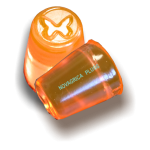
MEG
methyl eugenol
polymeric plug |
 |
Bactrocera dorsalis
The Oriental Fruit Fly is one of the most serious pests of fruit crops in the tropical and subtropical region. It has been recorded to infest more than 150 kinds of fruits and vegetables.
Methyl eugenol is the most effective lure for male Oriental Fruit Flies. It can attract male flies from a long distance (about 20 m radius). It reduces the male population to a low level such that mating does not occur. This male annihilation method is considered the most economic and effective method for Oriental fruit fly control.
|
|
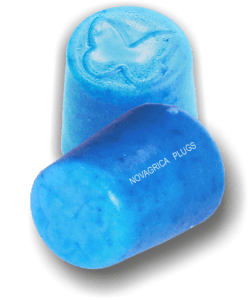 CUE CUE
cuelure
polymeric plug |
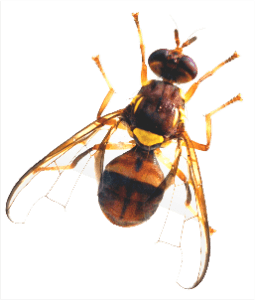 |
Bactrocera cucurbitae
On several occasions, this economically serious pest has been intercepted at ports of entry. With increasing travel and foreign trade, the possibility of accidentally importing the Melon Fly is a matter of continuing concern to the agricultural community.
Cuelure, is an effective attractant and should be used to quickly detect any flies that may gain entry and become established. In an established infestation cuelure would be invaluable in guiding eradication operations.
|
|
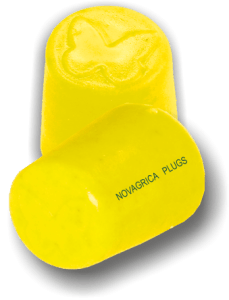 TPA TPA
terpenyl acetate
polymeric plug |
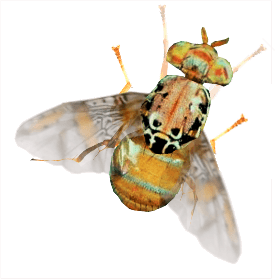 |
Ceratitis cosyra
The mango fruit fly is a serious pest in smallholder and commercial mango across sub-Saharan Africa, where it is more destructive than the Mediterranean fruit fly.
The fly’s impact is growing along with the more widespread commercialization of mango. Ceratitis cosyra, as larvae in infested mangoes from Africa, is one of the most commonly intercepted fruit flies in Europe. Adults are attracted to terpenyl acetate, but not to trimedlure, cuelure, or methyl eugenol.
|
|
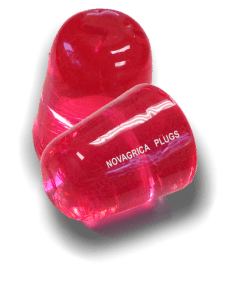
TRI
trimedlure
polymeric plug |
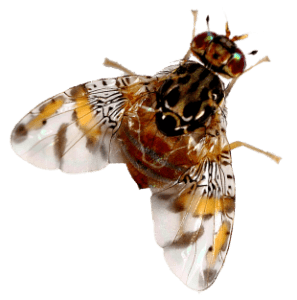 |
The Mediterranean fruit fly, Ceratitis capitata, is one of the world’s most destructive fruit pests, causing extensive damage to a wide range of fruit crops. The species originated in sub-Saharan Africa but has spread invasively to many parts of the world, including Australasia and North and South America. Able to tolerate cooler climates better than most tropical fruit flies is ranked first among economically important fruit fly species. The Medfly attacks more than 260 different fruits, flowers, vegetables, and nuts.
The adult fly is 3.5 to 5 mm in length. Its color is yellowish brown and like other Ceratitis spp., has banded wings. The male has a pair of bristles with enlarged spatulate tips next to the inner margins of the eyes.
The adults have a limited ability to disperse, but through global fruit trade can be transported to some distant places inside infested fruits. Once it is established, eradication efforts may be extremely difficult and expensive.
Adult flies can be monitored by traps baited with male lures. As in other tested species belonging to the subgenus Ceratitis, males are attracted to trimedlure and terpinyl acetate. Trimedlure (t-butyl-4(or 5)-chloro-2-methyl cyclohexane carboxylate), a synthetic kairomone is the most widely used lure for male Mediterranean fruit flies.
|
|
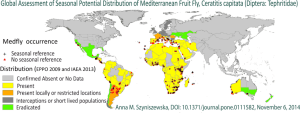
|
 Tephritid fruit flies are the world’s most devastating insect pests of horticultural crop. Parapheromones are an invaluable tool for both monitoring and mass trapping of these pests.
Tephritid fruit flies are the world’s most devastating insect pests of horticultural crop. Parapheromones are an invaluable tool for both monitoring and mass trapping of these pests.



 Tephritid fruit flies are the world’s most devastating insect pests of horticultural crop. Parapheromones are an invaluable tool for both monitoring and mass trapping of these pests.
Tephritid fruit flies are the world’s most devastating insect pests of horticultural crop. Parapheromones are an invaluable tool for both monitoring and mass trapping of these pests.